The Big Read: The Substation story — how a disused power station became an arts powerhouse that launched a generation of artists
SINGAPORE — Along Armenian Street lies a nondescript grey and white colonial building, which used to be a power station between the late-1920s and 1970s.
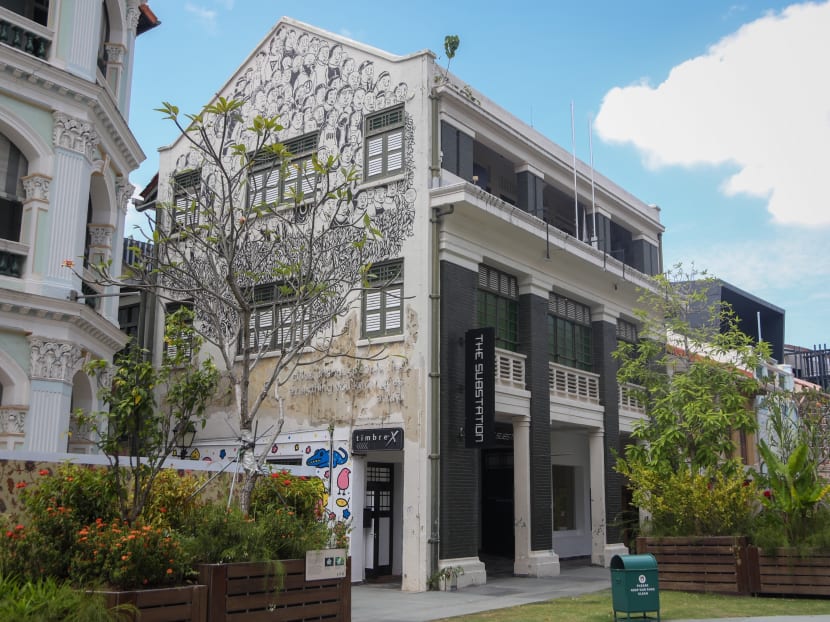
The first independent arts centre in Singapore, The Substation was set up by theatre doyen Kuo Pao Kun in September 1990. It was envisioned as a home for the arts — a place where anybody from the arts community could walk in to create and put up works without the fear of failure.
- Set up in 1990 by the late theatre doyen Kuo Pao Kun, The Substation is Singapore’s first independent arts centre
- It is a home for experimental works and has launched the careers of a generation of artists, several of whom have become mainstays in the arts scene
- It is also a haven for the arts community who are drawn by its laid-back vibe
- The Substation will vacate its premises in July, as the building has to undergo renovation works to preserve its structural integrity
- It will be difficult to replicate The Substation elsewhere, say some theatre practitioners
SINGAPORE — Along Armenian Street lies a nondescript grey and white colonial building, which used to be a power station between the late-1920s and 1970s.
It is easy to miss the building at first glance, as it blends into the row of conserved shophouses along the street. Its side walls, spray-painted with vibrant hues of graffiti, however, offers a hint of the building’s hidden personality.
This is The Substation, whose modest setting helped launch the careers of some of Singapore’s most prominent artists such as Cultural Medallion winner and theatre practitioner Alvin Tan, and multidisciplinary artist Zai Kuning who has represented Singapore at the prestigious Venice Biennale.
As visitors wander past the heavy, wooden doors into the foyer, they are greeted with a teeming hive of creativity.
A turn to the right immediately leads to a gallery of art exhibitions and a quick visit to the second and third floors will bring them up close with artists rehearsing for their next acting or dance performances.
The first independent arts centre in Singapore, The Substation was set up by theatre doyen Kuo Pao Kun in September 1990. It was envisioned as a home for the arts — a place where anybody from the arts community could walk in to create and put up works without the fear of failure.
“I am concerned about creating a space for the arts in our value systems, lifestyle and consciousness. The Substation will be a permanent space to do arts, see arts, talk arts and live the arts,” said the late Kuo in an interview with The Straits Times in February 1990.
In a time where performing spaces were limited and mostly managed by the Government, The Substation, which was led by artists and for artists, was “a tremendous leap of imagination”, said Mr T Sasitharan, who took over as the centre’s artistic director in 1996.
Amid a burgeoning arts scene, The Substation provided a space for Singaporean and international artists to stage risky, experimental and multicultural works, said Mr Sasitharan, 63.
The 1,630-sqm three-storey centre, which was converted from a disused power station, houses a black box theatre, studios and an art gallery.
However, after about three decades of being a mainstay in the arts scene, The Substation will vacate its premises in July, with the National Arts Council (NAC) taking back the building for renovation works.
The centre currently leases the building from the NAC under its Arts Housing Scheme, which provides affordable, heavily-subsidised spaces to the arts community .
The NAC had said that the building is a conserved property and there is a need for a major upgrading to preserve its structural integrity.
The Substation is considering some alternative venues, including Goodman Arts Centre in Mountbatten and Aliwal Arts Centre in Kampong Glam but has yet to finalise its decision.
Art practitioners told TODAY that the centre allowed them to put up experimental works in a safe space, without the pressure of having to produce polished works.
But more than an open space for artists to craft their works, it was the people and the community the space created that became The Substation’s biggest draw, they said.
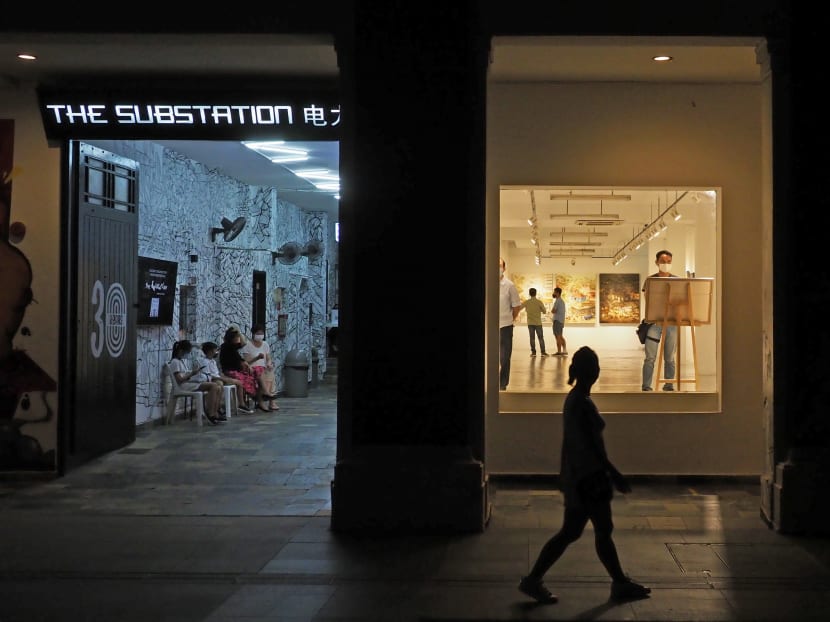
From punk rockers to filmmakers, The Substation was a melting pot that allowed artists of different genres to seek out collaborators and make lifelong friends.
Said 39-year-old Shaiful Risan, a regular at the centre since he was 13: “It feels real whenever I go there, like a spiritual home. The vibe that it gives, the fact that the place is a social equaliser, you could be a rockstar or small band and you would still be equal to each other.”
.embed-container { position: relative; padding-bottom: 56.25%; height: 0; overflow: hidden; max-width: 100%; } .embed-container iframe, .embed-container object, .embed-container embed { position: absolute; top: 0; left: 0; width: 100%; height: 100%; }
IN THE BEGINNING
Sometime in the early 1980s, Mr Kuo showed up at the office of veteran architect Tay Kheng Soon at Will’s Clinic (now Wilmer Place) along Armenian Street with a proposal to set up an independent arts centre.
Mr Kuo, who was acquainted with Mr Tay, asked the latter to go across the road with him to check out an electric substation, which had been built by the Public Utilities Board, as it was known then, in 1926 before becoming disused in the 1970s.
“There was a hole where we crept through. It was smelly and dusty. It smelled like urine and it was covered in cobwebs… and he said this can be an arts centre,” recounted Mr Tay, 80.
“I wasn’t impressed with the place, but Pao Kun was very enthusiastic about it,” he told TODAY.
Convinced by Mr Kuo that it was a feat they could pull off, Mr Tay designed The Substation following discussions with the art activist.
He came up with conceptual design sketches for the building with Mr Kuo and eventually got a grant from the Government, with the building restoration undertaken by the Public Works Department (PWD).
Despite Mr Tay’s concerns that the space was small, Mr Kuo assured him that artists would adapt to the space and experimental theatre would grow out of it.
The proposal to turn the space into an arts centre was submitted to the authorities in 1985, and an architect from the PWD was assigned to restore the building, said Mr Tay.
However, it was not all smooth-sailing, with disagreements emerging with the government-assigned architect over the colour scheme, recalled Mr Tay.
For example, while the architect wanted a variety of colours to feature in the black box, Mr Kuo wanted it to be just black to avoid drawing attention to the space’s features. They finally compromised on leaving the pipes above the black box air ducts purple, said Mr Tay.
Art practitioners said that the launch of the centre in September 1990 coincided with a surge in interest in contemporary arts in Singapore.
At a time when several prominent theatre companies such as TheatreWorks (now T:>Works), Action Theatre and The Necessary Stage were being founded, The Substation provided a platform to support emerging artists, said Mr Sasitharan.
Mr Ong Keng Sen, the artistic director of T:>Works, said that The Substation opened at a time when artists were starting to question their reliance on the Government and felt the responsibility to create their own spaces instead.
Indeed, The Substation soon became home to prominent talents and art groups.
Drama Box, headed by drama stalwart and former Nominated Member of Parliament Kok Heng Leun, was founded in 1990 following a gathering of former drama practitioners from the National University of Singapore at The Substation’s garden. The group later went on to hold its first production at the arts centre’s black box the following year.
The first play to be staged at the black box was The Necessary Stage’s “Those Who Can’t, Teach”. Directed by Mr Alvin Tan and written by Mr Haresh Sharma, it was the first time the group had attempted a work that was non-proscenium, or not on a conventional drama stage.
The Necessary Stage also staged “Mixed Blessings” and “MCP”, the first forum theatre shows in Singapore, at The Substation.
Mr Tan, 58, said that The Substation helped to support the group’s exploratory works in its early days, allowing them to grow their methodology until they were properly housed at the Marine Parade Community Building in 2000.
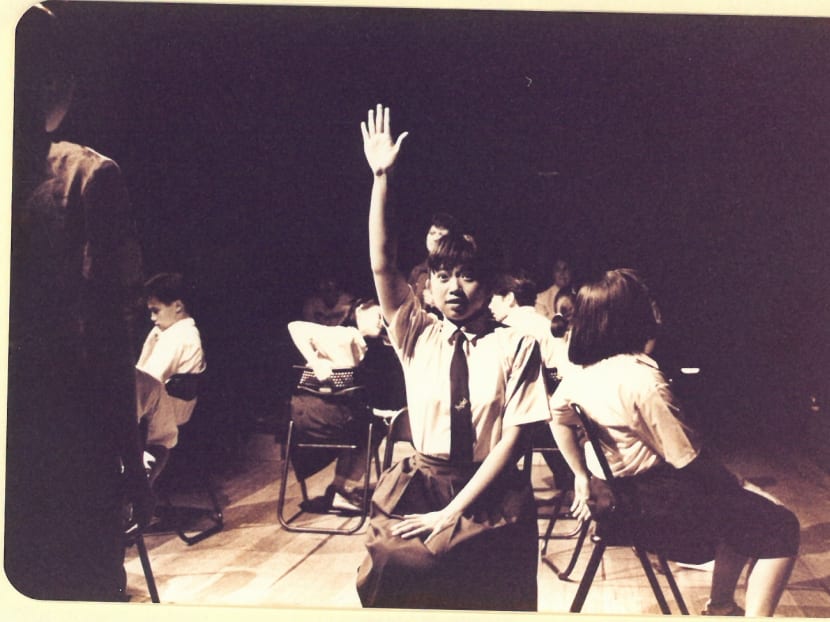
For the music community, The Substation provided a venue where bands could play regularly, said Mr Patrick Chng, 53, the lead singer of local indie band The Oddfellows.
“Before that, we never had a regular venue to perform at. It was always an ad hoc gig or event at a festival. So when The Substation came out, it was like ‘wow’. Finally, here we could have a place where we could perform regularly,” said Mr Chng, whose band performed at the launch of The Substation.
NOT JUST A SPACE
For many of The Substation’s patrons, it was the sense of community that the space fostered that drew them back on a regular basis.
In a time before social media, visiting The Substation on a weekly basis was how those interested in the arts could come together, build networks and friendships.
They pointed to its central location near the former City Hall, with many describing how they would make a visit to the old National Library (demolished in 2005) just behind The Substation before heading down to check out exhibitions or performances, and then continue hanging out in The Substation’s garden or coffee shops in the vicinity until late.
When Mr Shaiful first visited The Substation in 1995 to watch his first gig, the openness and unpretentiousness of the event blew him away.
“It felt like it was a bunch of friends doing a show. There was no coldness, barricades or security. You could sit on the stage and no one would shoo you off,” said Mr Shaiful, now 39.
He returned to The Substation regularly, at least once a month, and gradually found himself actively immersed in other aspects of the centre. Among various activities, Mr Shaiful has performed in stage productions, organised gigs and hosts an annual flea market for indie merchandise called “Distro Day Out”.
The draw of the space, said Mr Shaiful, is its ability to look beyond status.
“I could just go up to the management and say hi and have a conversation with them about why I’m visiting…you realise that the world is very equal and The Substation is an embodiment of that,” he said.
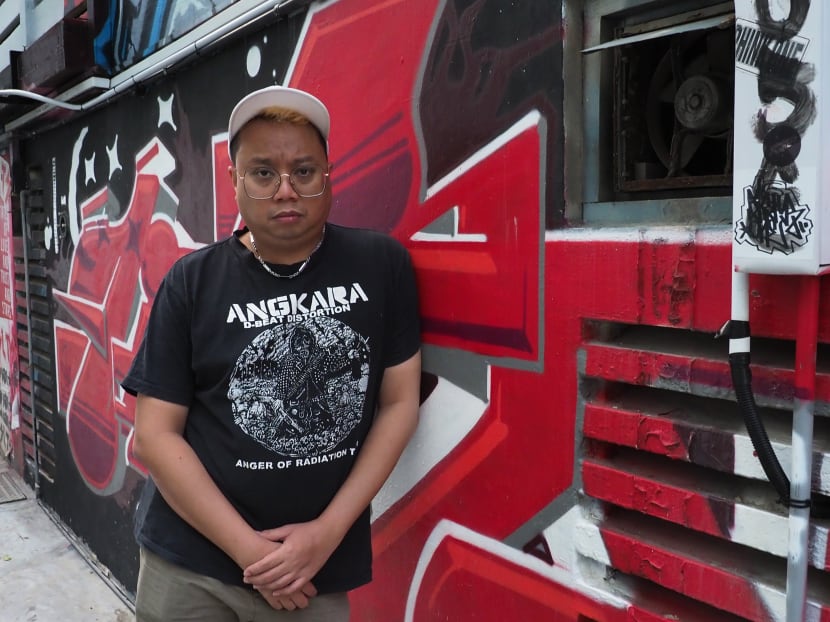
Mr Aik Beng Chia, a 53-year-old senior director in an advertising firm who used to sell his illustrations at The Substation’s weekend flea market in the 90s, said that the centre welcomed a good mix of ordinary people and those with artistic backgrounds.
“The whole place is cosy and everyone mingled with each other at the flea market and we sat at each other’s table and chit-chatted,” recalled Mr Chia, who is also a well-known photographer.
It was on one such weekend when Mr Chia met someone who spotted the illustrated cards that he was selling at the market and recommended him for a job as a graphic designer, which set him off on his current career path. The person continues to be a good friend until today, he said.
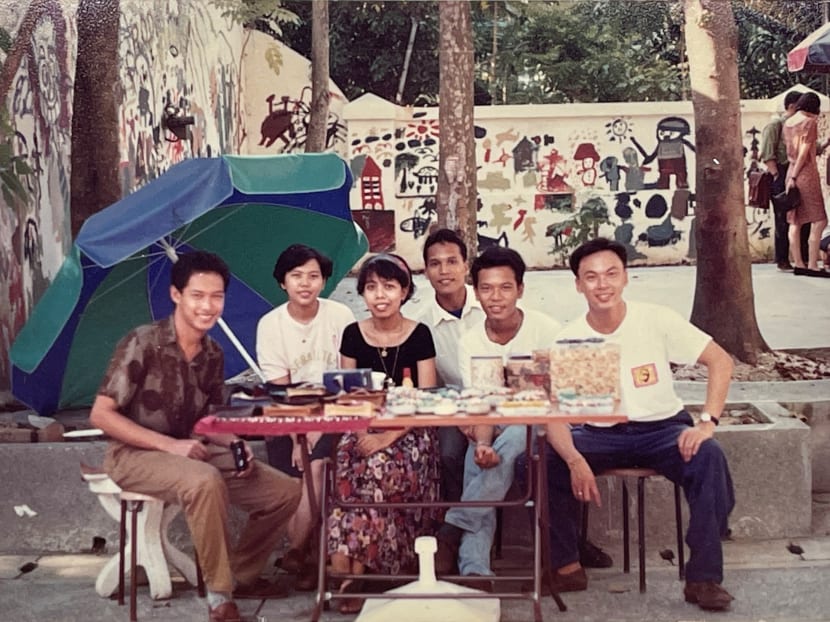
The centre used to host several key events in the filmmaking calendar, such as the Singapore Short Film Festival and Singapore International Film Festival.
Discussing the films that they watched outside of The Substation or in the coffee shop opposite was part of the important community experiences of filmmakers, said Mr Cheo.
Besides being a venue for artists to test new ideas such as multidisciplinary collaboration, it was also a place to meet like-minded people and experience unfamiliar art forms, said Ms Audrey Wong, its former artistic director in the book “25 Years of The Substation” published in 2015.
Poet Cyril Wong, 44, who was programme manager at the centre from 2002 to 2008, said that The Substation was the one place where he could merge his writing with multidisciplinary works.
One of his first attempts to do so was in 2003 in a multidisciplinary performance called Suites of a Stranger Taste at The Substation’s gallery.
The performance also featured a traditional Indian dancer, an early baroque musician and a filmmaker. Mr Wong said that it is only at The Substation where collaborations across such vastly different genres could occur due to the variety of artists it houses.
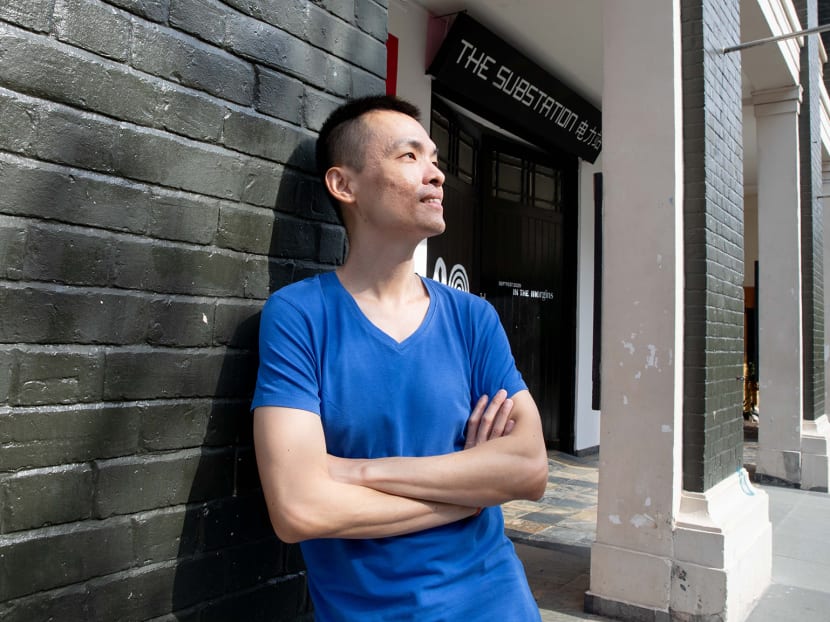
LAUNCH PAD FOR ARTISTIC DREAMS
The vision that the late Kuo set out to fulfill at The Substation — that of openness, inclusivity and experimentation without the fear of failure — has influenced art practitioners until today.
When it was first set up, the centre supported many individuals and organisations in the arts scene which have since become household names.
One of these was The Necessary Stage, which was founded in 1987 and headed by Mr Tan who received the Cultural Medallion in 2014. He said that he was excited by the possibilities offered by The Substation’s black box, a new theatre concept to him at that time.
Unlike the conventional spaces such as the Drama Centre where The Necessary Stage was initially staging its works, the black box space — which provides flexibility on where the audience and cast can be situated — allowed the drama troupe to experiment with its works, said Mr Tan.
For example, The Necessary Stage’s “Still Building” was staged at The Substation’s black box in 1993. The play featured characters entrapped physically in the rubble of a collapsed building and in psychological predicaments.
It was also performed with a theatre-in-the-round concept, where audience members surround the acting area.
To this end, The Substation’s black box was the best place to stage a show with such a concept as it helped to achieve intimacy and claustrophobia for the performers and audience members during the show, said Mr Tan.
The show went on to have a run of 19 performances and was also staged overseas.
For theatre veteran Ang Gey Pin, 55, The Substation has been integral to her growth as an artist. Her first solo work was at The Substation in 1992 which featured a performance entirely in Hokkien. At that time, it was rare for entire shows to feature dialect, said Ms Ang.
The artist-in-residence programme, in particular, helped her fledgling theatre troupe Theatre Ox find its feet. At that time, the group was a registered society but not fully professional yet.
With no place to go, then artistic director Mr Sasitharan invited Ms Ang to take up residency at the Substation in 1995 and went out of his way to secure sponsorship for three of her other colleagues at Theatre Ox.
“This came at a really good time. Without it, we would not have been able to train and perform full time,” said Ms Ang.
The Substation continues to support younger theatre makers such as Mr Irfan Kasban, 33, who last year won the Young Artist Award by NAC, the highest accolade for practitioners aged 35 and below.
Part of the reason why The Substation is a space to push boundaries was due to its lax regulations, said Mr Irfan, whose first English-language play “We Live in a Box” was staged at its black box in 2009.
“We were allowed to bring things like a pond of water into the theatre space. In Esplanade, we may have needed to call a plumber, but The Substation was open to us doing it ourselves,” said Mr Irfan, adding that there were no strict rules to inhibit artists from trying anything on stage.
Ms Shaza Ishak, 33, the managing director of Teater Ekamatra, said that the affordability of the space compared to other theatre spaces was instrumental in allowing the Malay-language theatre group to stage edgy, experimental shows.
Mr Tan said The Substation continues to be a safe space for the newer generation or even veterans like himself to try their hand at new works without having to worry about putting up polished works.
For example, he is currently directing a performance featuring emerging artists called “subTitled 1.0” at The Substation under an initiative called Bridging The Gap, which supports students graduating from theatre institutions by linking them up with established theatre professionals.
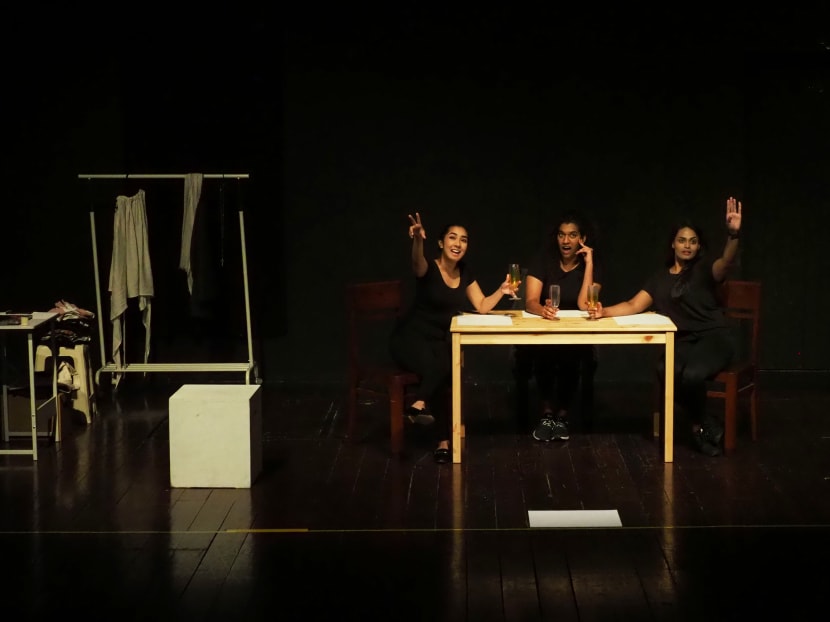
Despite being a veteran director, he said he is unable to stage such a work during The Necessary Stage’s main season. This is because a production featuring young, emerging artists could fail and miss the key performance indicators (KPI) set by NAC.
Failing the KPIs could affect The Necessary Stage’s qualification for grants in future, said Mr Tan.
“So this kind of project where we want to link young artists to the industry is ‘high-risk’ and only The Substation will be the venue sponsor for such a project,” he added.
MAGIC FADING BUT CAN IT REPLICATED?
Over the last three decades, both the building at 45 Armenian Street and its surroundings have seen many changes. And some of those interviewed by TODAY believe that the magic of The Substation has faded somewhat.
The Substation garden made way for bistro Timbre in 2005, while the coffeeshops in the vicinity made way for an extension of the Singapore Management University and art galleries. The road outside the building was also pedestrianised.
Without the usual spaces to gather at, The Substation is no longer what it once was, said some patrons. Coupled with changing programming over the years and the emergence of other performance art spaces such as The Esplanade, this has contributed to fewer people in the arts community visiting The Substation, said some patrons.
Mr Cheo, the filmmaker, said that over the years, The Substation had reduced its emphasis on film programmes.
For example, Moving Images, a film programme dedicated to independent and short films, was scrapped in 2016 under then artistic director Alan Oei.
This gave Mr Cheo, and others in the filmmaking community, little incentive to return, he said.
Mr Chng of The Oddfellows said that smaller venues supporting indie music, such as Home Club which was at Upper Circular Road, also meant that bands relied less on The Substation to host gigs.
With Armenian Street being gentrified and affordable food options vanishing, hot spots for artists to meet and gather have also diminished, said Mr Tan of The Necessary Stage.
Mr Isyraf Sabtu, 37, who has been working at The Substation since 2008, said that he too had observed fewer people coming to the centre compared to the time when he used to frequent its garden for gigs as a teenager.
The Substation building has also aged over the years, noted Mr Isyraf. For instance, it has yet to receive a fresh coat of paint since 2015.
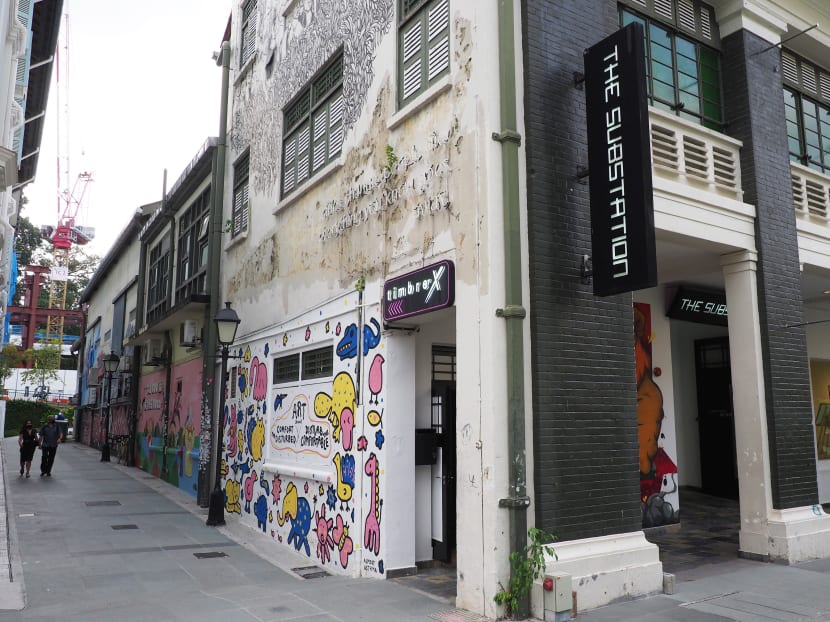
In addition to these changes, the Covid-19 pandemic has also affected The Substation’s income and programming.
Income generated through rental has dropped by up to 80 per cent since the circuit breaker in April last year, said Mr Loh Aik Khoon, the centre’s general manager.
Half of the centre’s funding comes from an NAC grant while the other half is mostly through rental income.
Ms Raka Maitra, 51, the centre’s current co-artistic director said that The Substation has tried to adapt to the situation. For instance, it ran its Isolation series, a web series featuring original content by local artists, from May to July last year.
It also rolled out a series of small-scale workshops in music and performance as part of its SeptFest Fringe festival last September.
The Substation will hold its final festival, SeptFest: In the Margins, at its existing premises from March 4 to 28. It will feature 11 productions and two exhibitions.
With its patrons pointing to the community as the key to defining their experiences at The Substation, can its magic — along with Mr Kuo’s founding ethos — be replicated elsewhere?
Mr Wong, the poet, feels that it is possible if the people within The Substation continue to believe in openness and experimentation.
“They have to believe in it, and they must be willing to defend it to the very end, no matter what. And if they are able to do it, I think they can survive anywhere,” he said.
Mr Sasitharan believes that it takes time for a place to build up a community spirit.
“This is not just about the people, it is also about the place — the history, the legacy, the memory of all those things that make a place for a community,” he said.
“These places are imbued with a spirit and The Substation happens to be 45 Armenian Street.”
Agreeing, Ms Raka reiterated: “Another space with the same vision of inclusivity will have to make its own histories and that will take time.








